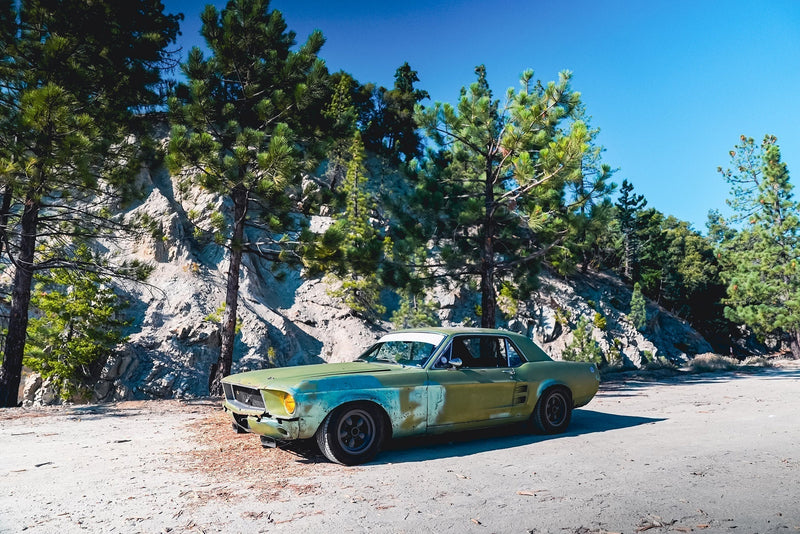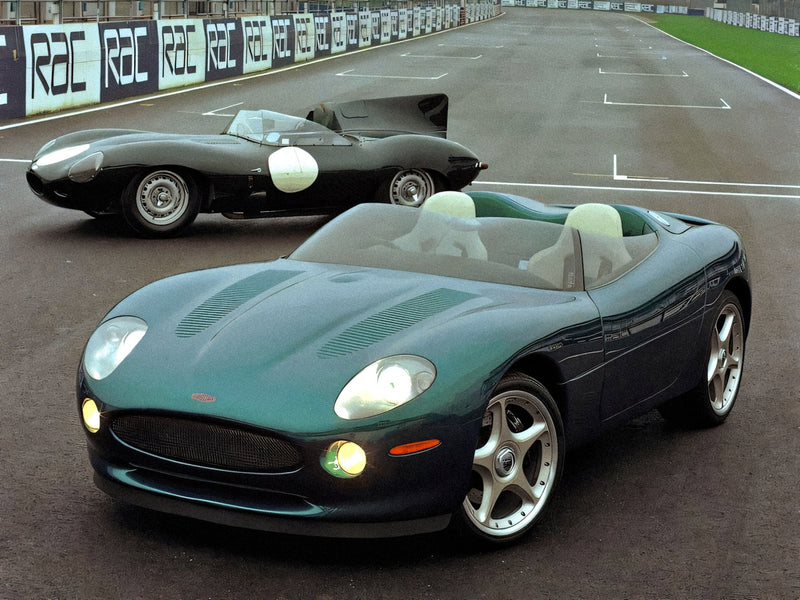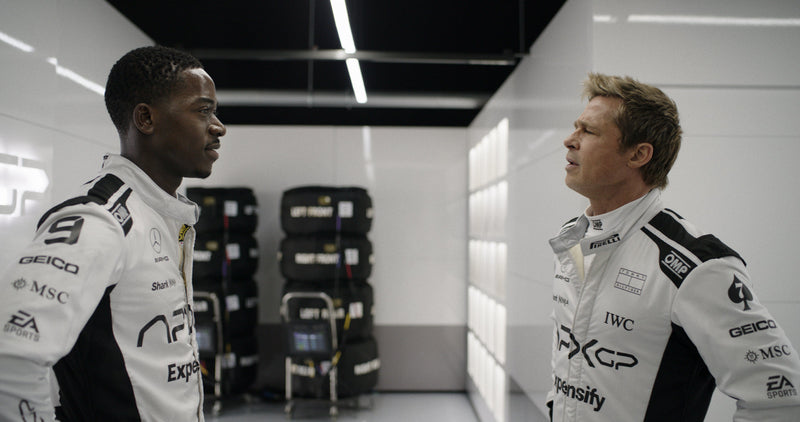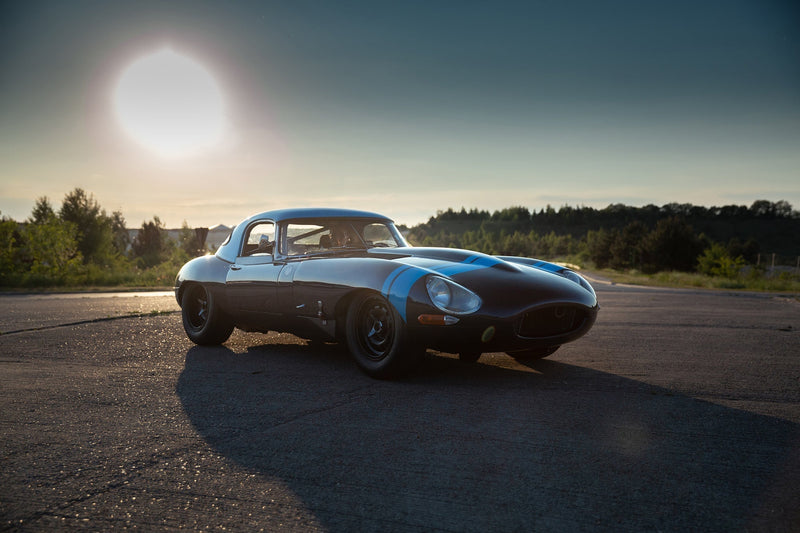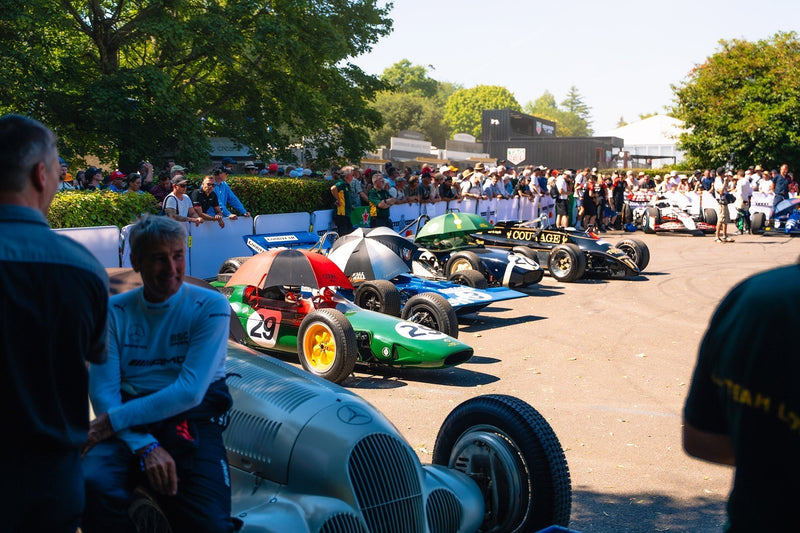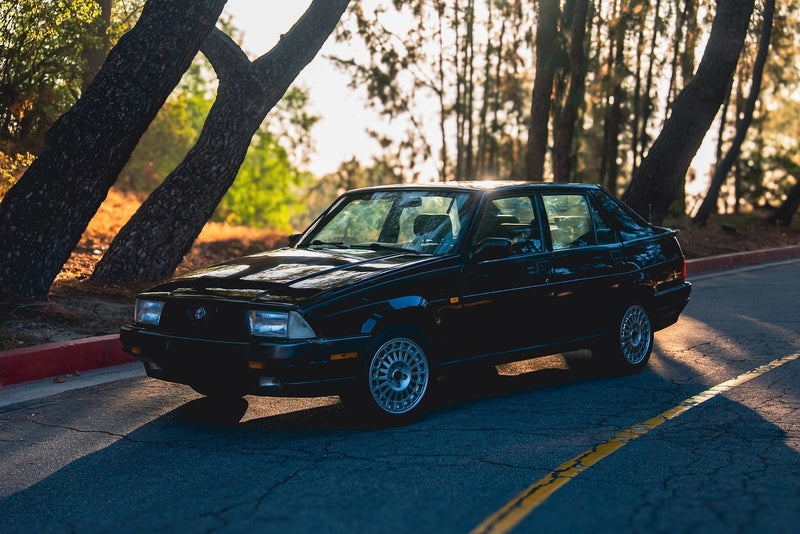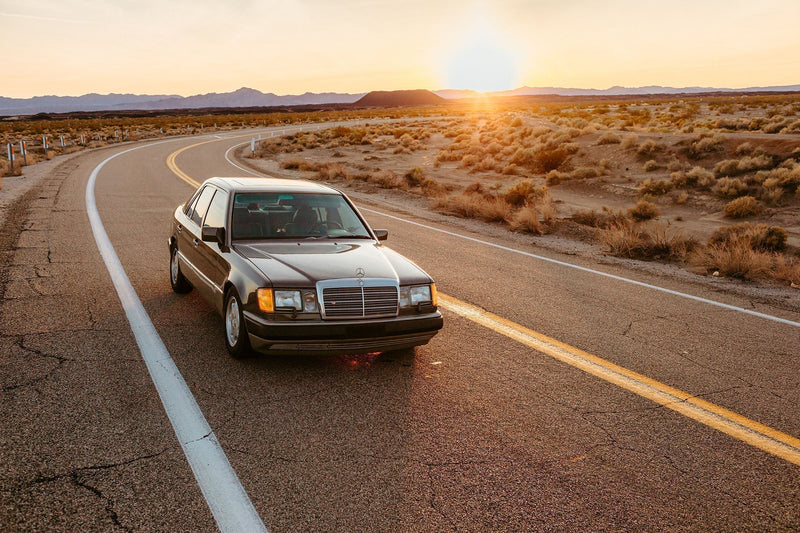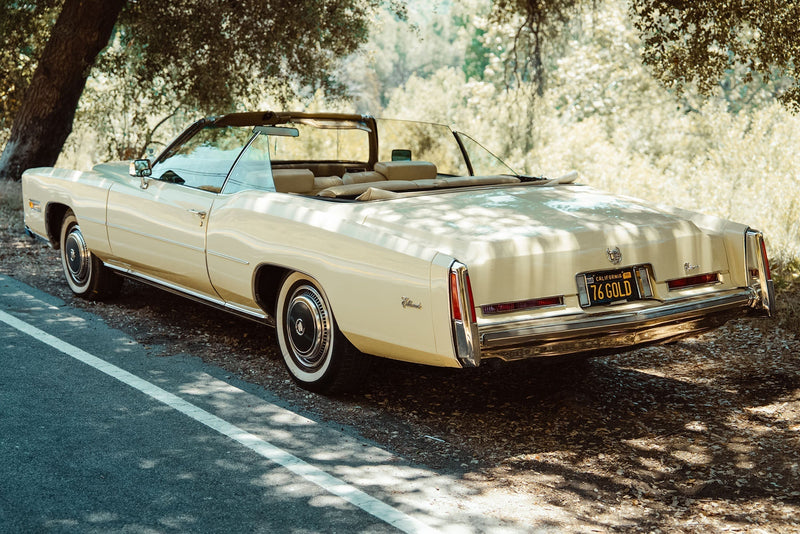This is it: the real Brock Racing Enterprises (BRE) Datsun 510. This is the very car that, despite being against all odds , John Morton drove to two SCCA Trans-Am series championship victories in 1971 and 1972. This retired racer normally sits dormant in a small museum in Tennessee, but Nissan shipped the car to California for this year’sJapanese Classic Car Show held in Long Beach and I had to get a closer look.
After ogling JNC fanatics at the Queen Mary Events Park, Nissan sent the legendary J-tin racer to the Nissan Design American studio in La Jolla—also known as a place just 15 minutes north of where I live. Obviously, a photo shoot was in order, and thankfully the design studio’s general manager and diehardpetrolisti Richard Plavetich was kind enough to make it happen. Better yet, a friend forwarded me John Morton’s contact information. I hope you enjoy the conversation as much as I did.



Andrew Golseth: John, we’ve got to ask: what was your first car?
John Morton: My first car was a 1954 Dodge I got in 1958 when I turned 16. My dad thought I’d be safe in that because it wasn’t very fast. About a year and a half later, I traded it and partnered with my brother, and we got a 1952 MG TD. I was a senior in high school.
AG: Didn’t take long for you to get into something sporty. What other sports cars have you had?
JM: I’ve had a lot of racecars, but I really haven’t owned that many sports cars. I’ve sort of avoided owning them but I do currently have a Lotus Super 7.
Once you race, you can’t do the normal sportscar stuff. Driving around in the street in a sportscar, even though it’s fun, you don’t get the same rewards as you do racing.
AG: I can understand that. Going back, when did your love of racing begin?
JM: When I was a young kid, my dad took me to races. The first big race he took me to was the Milwaukee Mile in 1949 and I got caught up in it. By the time I was 15, I knew racing was what I wanted to do with my life. I wanted to be a racecar driver after seeing the first sportscar race I ever saw, which was the Road America 500 in 1957 and I thought, “I want to do that”.
AG: (laughs) So, what was your first serious competitive racing?
JM: When I turned 21, which was how old you had to be back then to start racing, I bought a Lotus Super 7 and I started racing in SCCA in 1963. After about a year of that, I traded it for a Lotus 23. At that time, I was also working for Shelby and raced for Carroll in ’64 at Sebring, Road America, and Bridgehampton in the USRRC series, and I also continued racing my Lotus 23.
AG: From Shelby, how did you get involved with BRE? How’d all that begin?
JM: I was pretty much broke in 1968 working for a company making oil pans for racecars. Peter Brock called needing a fabricator to help build the second of his two Datsun Roadsters. He wasn’t looking for a driver, but I told him I’d only take the job if I could get a tryout to be a driver. He agreed, and as it turned out I became his number one driver after a few races.
With the Roadsters, we won just about every race we entered. Then we moved on to the Z cars and then in 1971, the 510, which we ran for ’71 and ’72. The #46 car raced 19 times in its life, in serious races, and it had pole position in 16 of those races after qualifying fastest, and it won 12 races overall. It has a pretty incredible record.
A lot of the young kids that weren’t even born yet that are 510 fans, a lot of their enthusiasm is a result of what we did back in ’71 and ’72. Even if they don’t know what BRE really is, they know the BRE 510.




AG: You’ve driven some incredible cars—Scarab, Lotus, Ferrari, Shelby Cobra—from your firsthand experience, what made the Datsun 510 such a great racing platform?
JM: I think what made the 510 so good is the fact it’s simple. Four-wheel independent suspension, and I don’t want to say it’s a copy, but the chassis layout is very similar to the BMW 2002, but was about half the price. It was as good a car as the 2002, and the engine was more capable in terms of horsepower per cubic inch. Simple engine that was well-designed and made lots of power, and the chassis, with some slight modifications, could be made to be handle excellently. Plus it was relatively light.
There wasn’t much to it. The minimum weight requirement was, I think, just 1,700 pounds for the first year. We built it as light as we could. The rollcage is very simple, probably wouldn’t pass any kind of inspection today because it’s so minimal. We came right down to the minimum weight and a lot of the competition had a hard time getting down on the minimum weight. We concentrated on weight down and horsepower up.
AG: Well, the recipe certainly seemed to work. Obviously, the ’71 and ’72 championship wins were the most significant, but are there any other specific moments that stand out as special to you?
JM: The first time we raced the car was in New Hampshire at Bryar Motorsports Park. We didn’t know how competitive it would be and I honestly didn’t think it would be very competitive because it was basically the derivative of a cheap economy car up against much more pedigreed cars, like the BMW , Alfa , and Escort. So, it was quite an outstanding moment when we got pole position the very first time we raced it. We got pole position every race in 1971, but it was after that first race we realized we really had something.
The last race of the ’71 season at Laguna Seca, we had to win to win the championship and Alfa had to win to win the championship. Alfa had, I don’t want to say cheated, but they ran a bigger gas tank than what was allowed and, even though they finished first, they were disqualified. We probably would have won the race if Alfa had made the pit stops they were suppose to. We didn’t go to the winner’s circle we went a day later after Alfa was disqualified!
We were declared the winner and had the most points so we won the championship. That was the most famous race the car ever ran, a lot of people remember that one.





AG: Those pesky Alfas! Is there any particular aspect that made the BRE Datsun 510 so good?
JM: There’s no singular thing, I’d just say it was the perfect package forthat category of racing. It had lots of power. We ran the 1600 the first year . The second year we were allowed to run 1800, but we had to add weight as well, but we proved that even with the added weight, with the added power we were faster than the 1600. I’d say we always had fabulous engines that made really good power for the displacement, and a really good handling car that could get down to the minimum weight.
It was sophisticated in that it had the four-wheel independent suspension, something the Alfas didn’t have but the BMWs did. I have to say this, if we had the BMWs or Alfas to race with our same team, I think we would have won anyway. I think the team is what made the difference. It wouldn’t have been a big deal, because you know BMW, they’re supposed to win. But with a cheap Japanese car, it wasn’t supposed to be a racecar. Alfa had such an incredible racing history going back to the ’30s, they were dominant for years, and BMW had an incredible history as well, but Datsun had nothing, at least nothing in over here. BRE is what made Datsun history and helped change the image of the Japanese car.
So, I’m glad we did it in a Datsun. The Alfa was our main competition, but their dual-overhead cam engines were older in design with fairly antiquated combustion chambers. They couldn’t make the power per cubic inch that the Datsun could make because the SOHC Datsun engine was better.
AG: You’ve got to love Japanese engineering. If you had to rank it, where would you place your BRE years in your long and successful racing career?
JM: To me, it was the most important because it was the most memorable and it was the most dominant. It wasn’t the kind of racing I really wanted to do, I wanted to race prototypes and the highest level of sports cars and Indycars. I had some highlights with Jaguar, other Nissans, Porsche, and even Ferrari, but BRE has to stand out above all of them.
That team was so good, I don’t think I was ever on another team that was quite as good as that one and I was on a lot of great teams. Forget the car or the driver, but the team personnel, the quality of the BRE team members is of the highest caliber that I’ve been involved with.



AG: That’s quite a testament to BRE and Nissan’s professionalism. Being a veteran racer, what advice would you give to aspiring drivers?
JM: Well, it depends on what their goals were. If they wanted to be a Formula One driver, or an Indycar driver, or a NASCAR driver, if they wanted to get to that level I’d say go find a whole lot of money to start with! And start racing go-karts when you’re 8 years old… but in that case I guess I’d be telling this to an 8 year old.
But if you just want to have fun and enjoy racing, SCCA is the best place to start. You never know what’ll happen. Mark Donohue started in SCCA. It’s easy to have fun and pretty cheap to run in the smaller series, but if you really want to get somewhere in racing on a professional level, it’s a lot of hard work and not as much fun—like getting sponsorships, which I always hated doing.
AG: Speaking of sponsorships, the BRE livery and number 46 is an iconic scheme, how’d those come about?
JM: Peter Brock designed the livery. Peter is an incredible artist and designer. The stripes and paint scheme, that was all him. As far as the number, it was my choice. The first car was number 44, the Roadster. The 510, I chose #46 because when I was a little kid there was a slot machine in a resort in Georgia they’d let me play and 6 was my lucky number. It seemed to win more than anything else. I mean, we’re talking nickels and dimes but it became my lucky number and when I started racing Penske used #6 and I think Jim Hall used #66. So, I chose #46 because it had a 6 in it and it was a nice balanced number. We had such success with it, I’ve used it ever since.
AG: That’s great! I’ll never look at the #46 car the same again. Is there anything about the era you’d like to add?
JM: You know, it was a simpler time and I think it was a better time. I can’t tell if that’s because it was a better time for me, but… it’s complicated. Racing now isn’t as interesting as it was, even though I still watch it all now—NASCAR, Indycar, Formula One, Daytona, Sebring, and Le Mans. Well, all of them except sports car racing!
It’s too complex now. The technology, it’s fabulous, but I don’t care about that aspect of it and it’s taken over the sport. I liked it when it was a simpler sport and sadly more dangerous. It’s hard to explain. You don’t want people to get hurt, I used to cry when my heroes were hurt or killed racing, but the romance of the danger is almost gone, and that’s what made it alluring.
We’d like to thank Richard Plavetich of Nissan Design America for allowing us to photograph the BRE Datsun and John Morton for taking the time to chat with us about his career and this very special 510.





















































